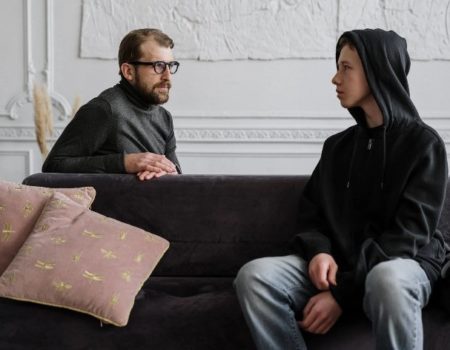Carrying out Difficult Conversations with Children and Young People
Creating the right situation and planning
Plan where, when and how to talk to the child so that they will listen:
- Ensure you have put a good amount of time aside, so that the child does not feel rushed.
- Consider the time of day and what the child has just finished doing or is about to do after, for example, in the evening the child may be too tired or not in the mood to concentrate.
- Ensure that there will not be interruptions.
- It could be good to have it in a relaxed and neutral place like on a walk or a bike ride or even when you’re in the car.
- You should be ready for things to get very emotional and perhaps distressing.
- Consider who else should you tell before the child, so they can be ready to give emotional support.
- Think about the sorts of questions the child’s likely to ask you, so you can have the answers ready.
- Young people can sense when we as adults feel uncomfortable, therefore modelling openness is key.

Starting the conversation
- Children are often aware of more than we realise.
- Being direct, demonstrating openness and respect can be the appropriate approach.
- Getting a balance (so not too forceful or too vague) can avoid a child from clamming up and prevent the conversation from veering to a different topic.
- Explain everything slowly, in words that the child will easily understand.
There are resources to support starting conversations:
- YouTube videos
- Specialist books in the topic area
- Games or interactive activities can help children open up. For example, playing cards, cooking, ‘Blob cards’ and ‘Story Cubes’.
Listening is important
- It should be a two-way conversation.
- For them to feel truly involved it’s very important to show that you are listening to them and really value what they’re telling you.
- Start by asking questions that don’t just have “yes” and “no” answers. This is going to give the child the chance to tell you what they really think.
- Then give them as long as they need to answer without interrupting.
- They may be nervous or still working out what they really think and that could take a little time.
- Don’t be afraid to let the child ask you questions too.
- It is very important to make sure they know that they’re not responsible or to blame in any way for what you are telling them.
If the child has approached you to have a difficult conversation:
It has probably taken a lot of courage to even mention it to you, so you need to make them feel as comfortable as possible about continuing the conversation.
- If it’s not the right time or place, agree when and where you’re going to talk. And when you do get together begin by reassuring the child that they can tell you anything they need to, and you won’t blame them in any way.
- Listen carefully to what they have to say and if you don’t understand anything, be honest and ask them to explain. Above all, let them say everything they want to say before you give any opinions or advice.
- It’s OK to ask the child if there is anything, they’d like you to do, but you may not be able to do anything at all; for example, if they’re grieving over a death. What you can always do is reassure and support.
- If there is anything you plan to do, let the child know. Otherwise they may feel like you’re going behind their back and cause mistrust.
Ending and Following the conversation
Difficult Conversations should always have an ending:
- Ask how they are feeling
- Ask what they are going to do straight after.
- Ensure there is support in place
- Ensure they know how to access support if they need it.
- Ask if there is anything else, they would like to discuss / ask / do before you part.
- If appropriate arrange a follow-up conversation.
- If appropriate agree the next steps and what you are going to action / do following the conversation.
Child Sexual Exploitation
If you need to speak to a child or young person regarding Sexual / Criminal exploitation, you can use all of the advice in this leaflet above. In addition, you can use this tool to support you in your work:
Helpful resources:
- Remove a nude image shared online | Childline
- Barnardo’s CSE online grooming, Greg’s story
- https://www.nspcc.org.uk/what-is-child-abuse/types-of-abuse/child-sexual-exploitation/
- https://www.childline.org.uk/info-advice/bullying-abuse-safety/abuse-safety/child-trafficking-exploitation/
- Posters that can be downloaded
Please be aware:
- “Child sexual exploitation may occur without the child being aware of events or understanding that these constitute abuse.
- Online exploitation includes the exchange of sexual communication or images and can be particularly challenging to identify and respond to.
- Those who work with and care for children can struggle to remain up-to-date with the latest sites and potential connection points, so practitioners should always seek specialist support if unsure about online environments.
- Online child sexual exploitation allows perpetrators to initiate contact with multiple potential victims and offers a perception of anonymity, potentially saying and doing things online they wouldn’t do offline.
- Where exploitation does occur online, the transfer of images can be quickly and easily shared with others. This makes it difficult to contain the potential for further abuse.” – Department for Education (publishing.service.gov.uk)
To prevent and intervene, in supporting and safeguarding children and young people that are experiencing or have experienced exploitation, creating an environment where they feel safe to discuss relationships, experiences and fears can be critical.
Please also see the PAN London Child Exploitation Protocol






